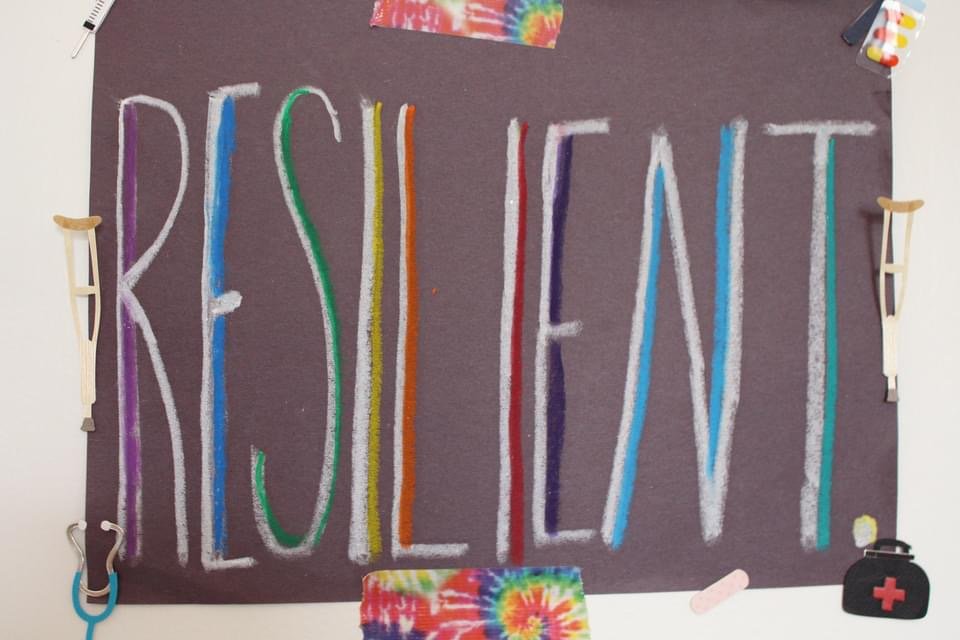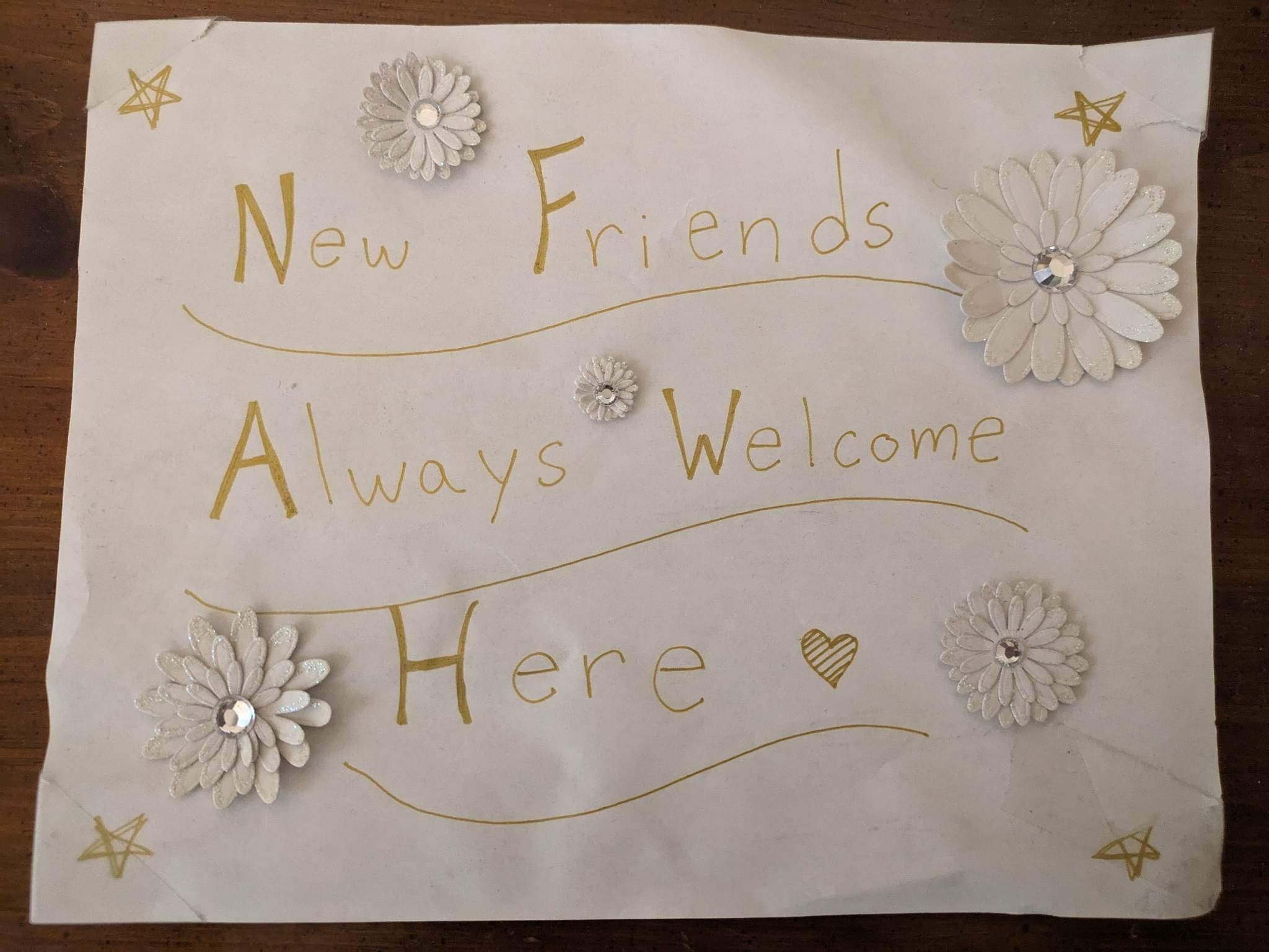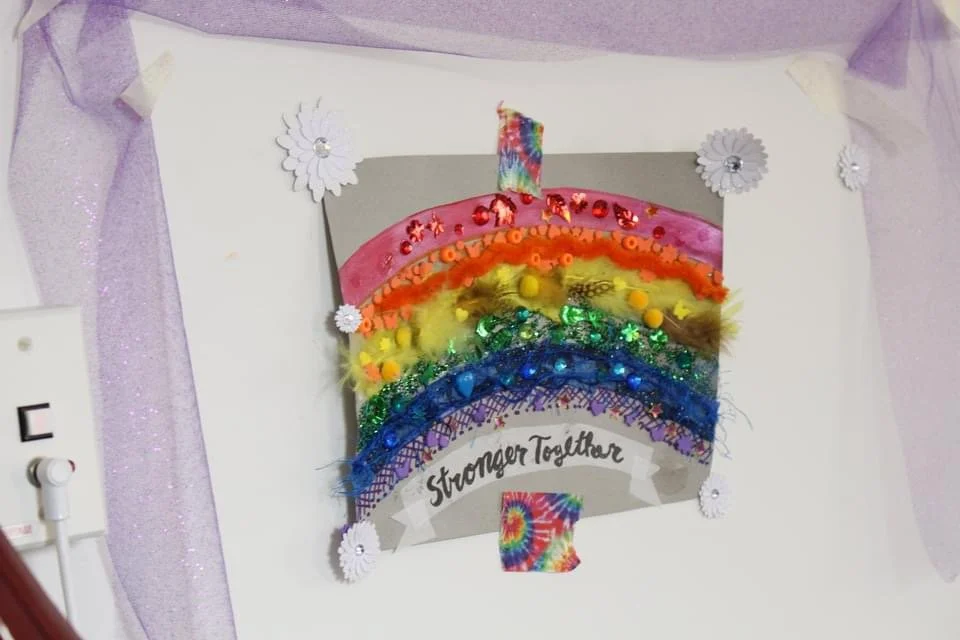
recon•structing shiva : an author’s note
At the time Emet was in hospice, Noah was the faith coalition manager for the National LGBTQ Task Force. Noah was responsible for all of the faith programming at Creating Change, the national conference on LGBTQ Equality in January 2019 in Detroit. Noah left for Detroit in January 2019, unsure if Emet would be alive when Noah returned. There was an art studio at the conference. At the conclusion of the conference, Noah was responsible for packing up the art studio. Noah could not bear to dispose of the art created by queer and trans folks, the outward representation of queer and trans souls, and brought it back to Philadelphia, where it found a second life as part of the larger art gallery in Emet’s hospice room.
Noah wanted Emet to die uplifted by the beauty and the love of queer and trans people. Each time someone visited, they made art, and then added it to the gallery, the way a mourner might place a stone on a grave. After Emet passed, Emet’s friends chose the pieces of art they wished to keep. The art gallery is one way of visualizing the passage of time, as the art gallery grows, as the art gallery moves from one hospice center to another and then to shiva, and then finally as the art is framed in the homes of our friends, and the banner is carried at protests.
Jenn Wright designed the banner and the funeral program. Sarah Barasch contributed poetry to the living funeral program. Niko drew the pictures of Emet. Josh Friedman made the Emet sign. Sarah Giskin made the New Friends Always Welcome Sign. Noah did much of the attaching of art to the walls, usually with whatever was around, most often stickers or rainbow tape. Shayn photographed the art.
Hospi•ce Hospi•tality
The hospice space itself became a kind of art project that we did together. The space was transformed in such a way that one would not recognize it as a hospice room. Many people compared it to a dorm room. It proved to all of us that suffering itself can be transformed with solidarity.
It was not that the community came to Emet. Emet was the locus of community. Emet offered his hospice room as a location for organizing meetings, for hangouts, for havdalah. If there was a party or a meeting, he wanted to be there, so just hold the meeting in his hospice room. Rather than hospice being a site of departure, it was a place for settling in together. Who knew hospice could be a place of hospitality?

